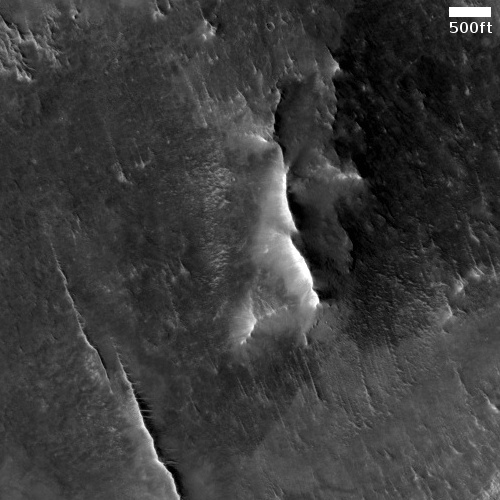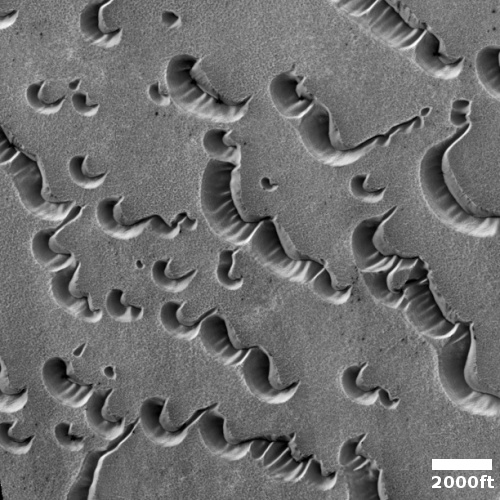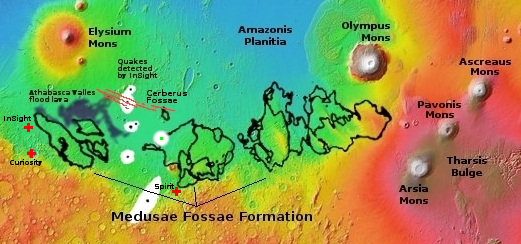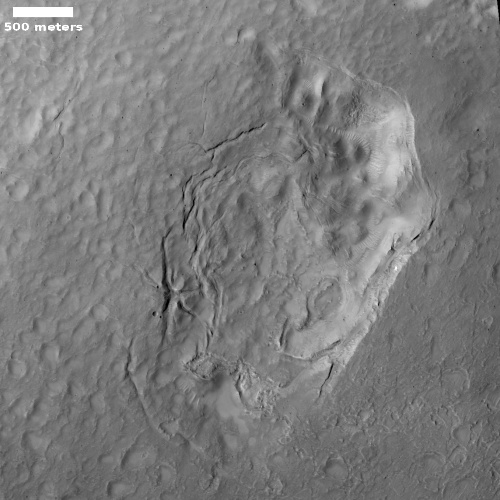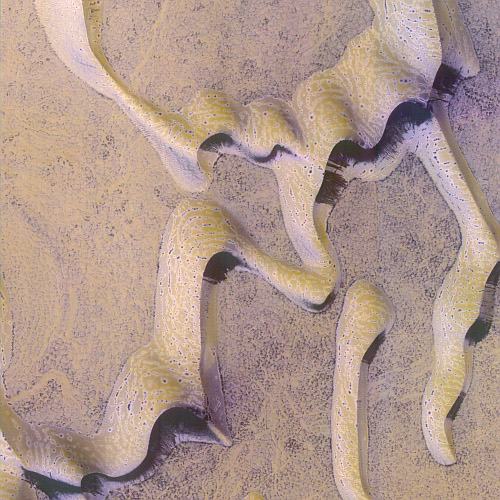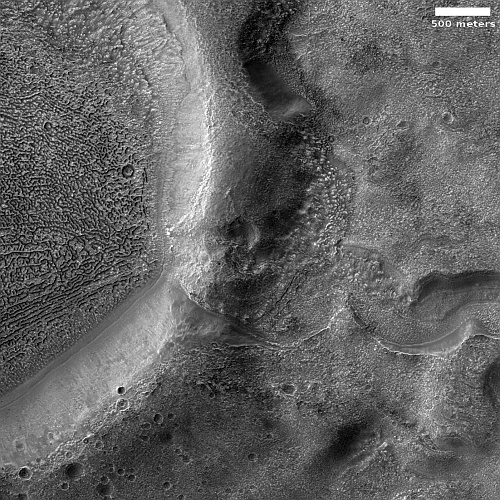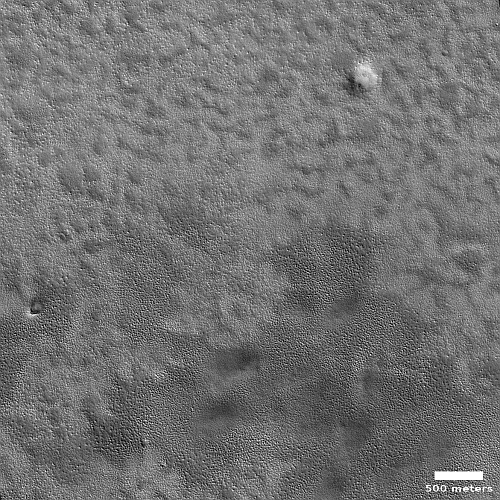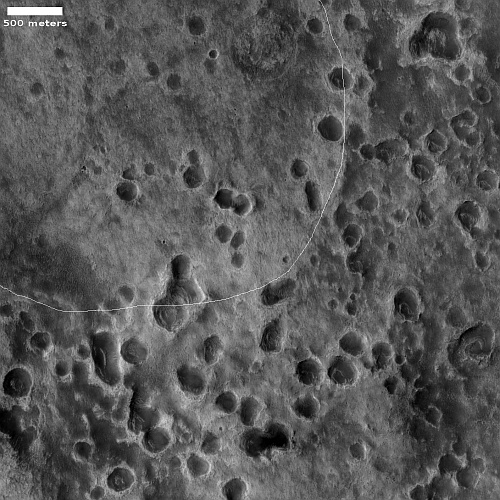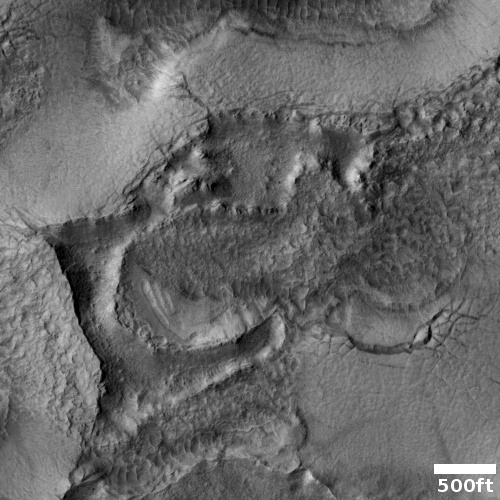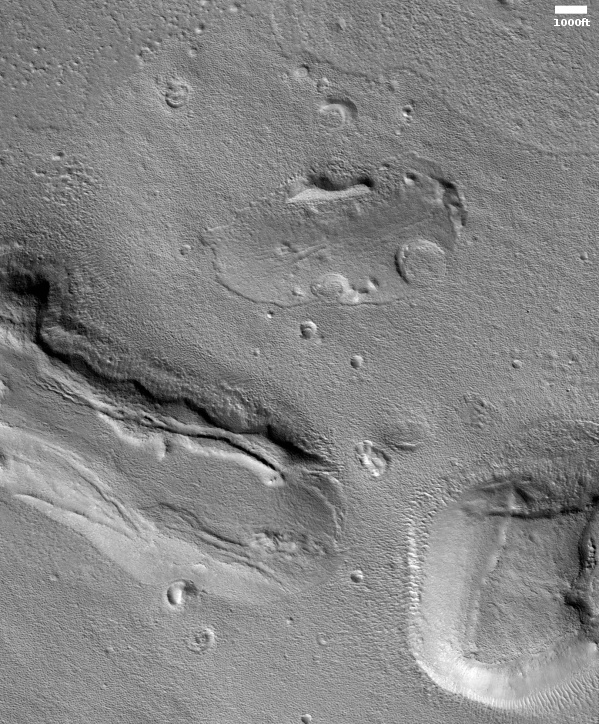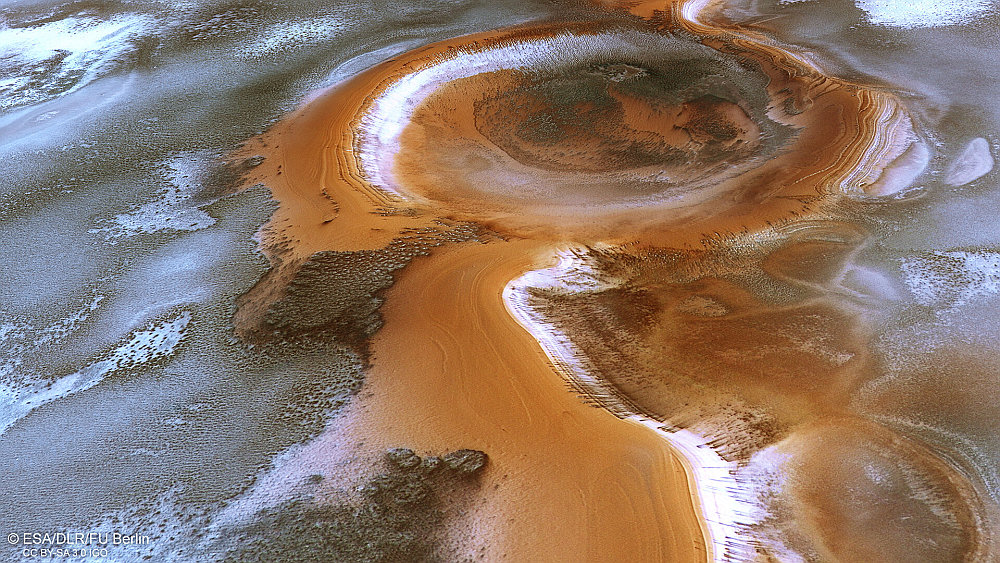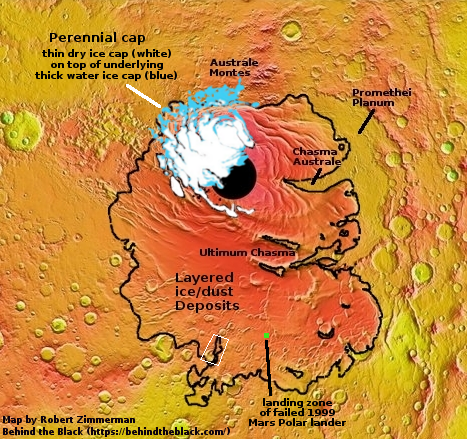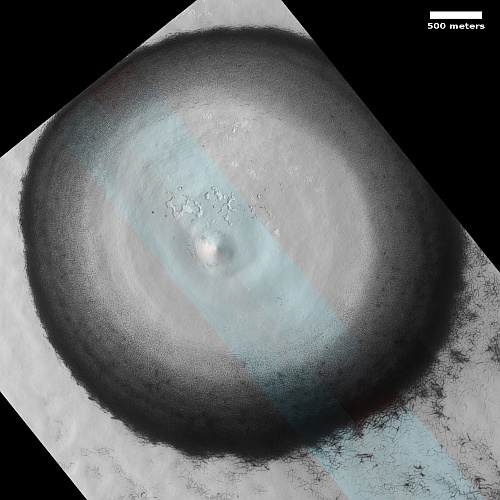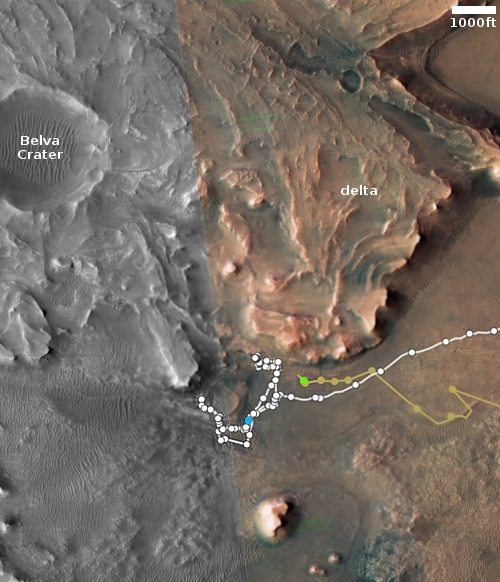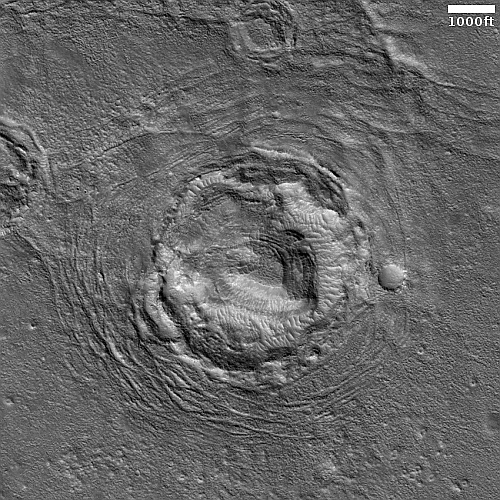Machete Mesa on Mars
Cool image time! The picture to the right, cropped to post here, was taken on November 30, 2022 by the high resolution camera on Mars Reconnaissance Orbiter (MRO). It shows a variety of ridges in a region of Mars called Arabia Terra, which is also the largest transition zone between the Martian southern cratered highlands and the northern lowland plains.
While this picture illustrates some nice geological facts about Mars (see below), I post it simply because of the dramatic sharpness of the ridge on top of the mesa, which I guess is several hundred feet high, but only a few feet across, at most, at its peak. A hike along this ridgeline would be a truly thrilling experience, one that the future human settlers on Mars will almost certainly find irresistible. Put this location on your planned tourist maps of Mars. It will likely be an oft-visited site.
» Read more
Cool image time! The picture to the right, cropped to post here, was taken on November 30, 2022 by the high resolution camera on Mars Reconnaissance Orbiter (MRO). It shows a variety of ridges in a region of Mars called Arabia Terra, which is also the largest transition zone between the Martian southern cratered highlands and the northern lowland plains.
While this picture illustrates some nice geological facts about Mars (see below), I post it simply because of the dramatic sharpness of the ridge on top of the mesa, which I guess is several hundred feet high, but only a few feet across, at most, at its peak. A hike along this ridgeline would be a truly thrilling experience, one that the future human settlers on Mars will almost certainly find irresistible. Put this location on your planned tourist maps of Mars. It will likely be an oft-visited site.
» Read more

